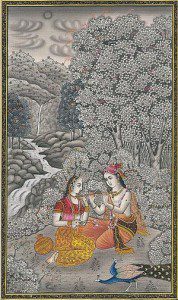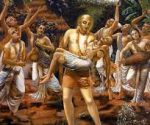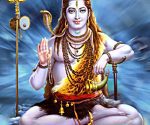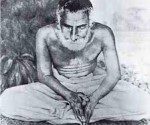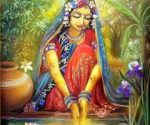Kirtana in Raganuga Sadhana
April 15, 2013 (VNN) – by Vic DiCara / Vraja Kishor
There is nothing “higher” or “more intimate” than hari-nama-samkirtan, nor is there anything more basic and practical. It is the central cynosure of all stages of bhakti: prema, bhava, and both types of sadhana- vaidhi and raganuga.
If there is a doubt that kirtana is the main focus of raganuga practice, I would like to show how kirtana is indicated in all three of Sri Rupa Goswami’s three verses defining the practice of raganuga-sadhana (Bhakti Rasamrita Sindhu 1.2.294-296).
The first verse states:
| kṛṣṇaḿ smaran janaḿ cāsya preṣṭhaḿ nija-samīhitam tat-tat-kathā-rataś cāsau kuryād vāsaḿ vraje sadā |
Remember Krishna along with the beloved person who epitomizes your own aspiration for devotion. Always delight in discussing their affection And thus always live in Vraja |
In this verse the word katha is synonymous with kirtan. The essence of raganuga sadhana is to always glorify (kirtana/katha) the names, forms, pastimes, and qualities of Krishna and the beloved devotee who epitomizes the perfection of your own devotional aspirations. By constantly performing such kirtan you will always reside in the sacred realm, Vraja.
If the description of raganuga practices was left at only this verse a misconception would be likely: that raganuga is a practice done solely with the mind and voice. Therefore Sri Rupa adds another verse:
| sevā sādhaka-rūpeṇa siddha-rūpeṇa cātra hi tad-bhāva-lipsunā kāryā vraja-lokānusārataḥ |
Infuse your practices in this world With the desire to attain the mood Of the services you desire in your perfected form As a resident of Vraja |
This verse clarifies that the mental and vocal aspect of raganuga sadhana must be brought to bear upon ones practical activities as a sadhaka. One must perform one’s practical services infused with the thoughts of how they correspond to the perfected services one desires to attain in the spiritual world.
Raganuga-kirtan is different from vaidhi-kirtan because the vaidhika practitioner merely chants because he or she knows it is the best thing to do, and wants to do the right thing; the raganugika practitioner, however, additionally chants while inwardly feeling the correlation of the kirtan to the perfected services they desire: for example, singing and dancing in rasa-lila, singing for Radha-Krishna while they ride a boat in Manasa Ganga, etc.
If the delineation of raganuga practices were left at only these two verses it would remain unclear exactly what this verse means. Does it mean that we should practically imitate our desired services, as some people do by dressing as gopis and physically imitating the activities of gopis; or does it mean that our practical services should reflect the mood (“tad-bhava”) of such perfected services? To make it explicitly clear that he means the latter, Sri Rupa concludes with the following verse:
| śravanot-kīrtanādīni vaidha-bhakty uditāni tu yāny angāni ca tany atra atra vijñeyāni manīṣibhiḥ |
Hearing and chanting (kirtan) I mentioned while discussing vaidhi-bhakti Those practices must be applied here too in a realized way, as understood by the wise |
With this final verse on the subject, Sri Rupa explicitly states that the 64 limbs ofvaidhi-sadhana, of which hearing and chanting (kirtana) are the most important, are the vehicle through which the raganuga sadhaka cultivates constant remembrance of Krishna and his beloved, and through which the practitioner develops his or her own longing for and concept of participation in the loving relationship of Krishna and that beloved.




